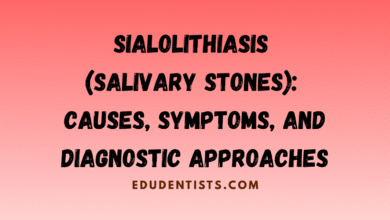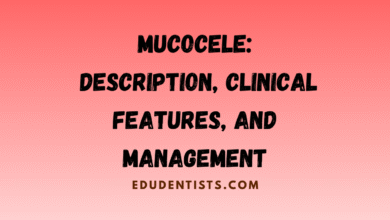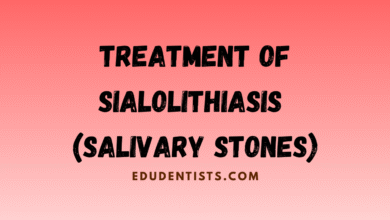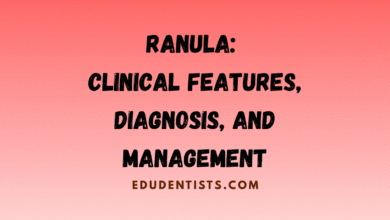Oral Ulcerative, Vesicular, and Bullous Lesions

Oral Ulcerative, Vesicular, and Bullous Lesions
Oral Ulcerative, Vesicular, and Bullous Lesions
Many diseases that affect the oral mucosa—such as ulcerative, vesicular, and bullous disorders—can look very similar, often appearing as red, eroded areas due to the fragility of the thin oral lining. Vesicles and bullae in the mouth are easily ruptured, leading to ulcers covered by fibrin, which makes diagnosis based on appearance alone challenging.
Clinical Evaluation and Diagnosis
A detailed patient history is as important as the clinical exam. Four key factors help narrow down the diagnosis:
- Duration (acute vs. chronic)
- History (first-time or recurrent lesions)
- Number (single vs. multiple)
- Location of lesions
This classification is useful for both students and experienced clinicians in avoiding diagnostic confusion—such as mistaking recurrent aphthous ulcers for viral infections or autoimmune diseases like pemphigus and pemphigoid.
A complete review of systems should also be conducted, including questions about:
- Skin, eye, genital, and rectal lesions
- Systemic symptoms like fever, joint pain, or muscle weakness
Oral and skin conditions often overlap, so a basic understanding of dermatology is beneficial.
Common Clinical Terms Used in Oral Lesion Descriptions
To properly document and identify oral lesions, dermatologic terminology is often applied:
- Macules – Flat lesions, different in color; e.g., melanotic macule.
- Papules – Small raised lesions (<1 cm); e.g., seen in candidiasis.
- Plaques – Larger raised lesions (>1 cm), similar to large papules.
- Nodules – Dome-shaped, deeper lesions within mucosa; e.g., irritation fibroma.
- Vesicles – Small fluid-filled blisters (<1 cm).
- Bullae – Larger fluid-filled blisters (>1 cm).
- Erosions – Red, moist areas usually from ruptured blisters or inflammation; may lead to ulcers.
- Pustules – Blisters filled with pus; yellow in color.
- Ulcers – Well-defined depressions covered in yellow-white fibrin; e.g., aphthous ulcers.
- Purpura – Reddish-purple spots from blood leakage; includes:
A. Petechiae (<0.3 cm)
B. Purpura (0.4–0.9 cm)
C. Ecchymoses (>1 cm)
Classification of Oral Mucosal Lesions
To aid in diagnosis and management, oral lesions are grouped into four clinical categories:
- Acute multiple lesions – Occur once and resolve.
- Recurrent lesions – Come and go over time.
- Chronic continuous multiple lesions – Persist over a long period.
- Single lesion diseases – Isolated findings.
This classification helps distinguish between infections and chronic autoimmune conditions, improving diagnostic accuracy and patient care.
Herpes Simplex Virus (HSV) Infections of the Oral Cavity
Herpes simplex virus (HSV) is a common cause of oral ulcerative disease and belongs to the Herpesviridae family, which includes several human pathogens such as HSV-1, HSV-2, varicella-zoster virus (VZV), cytomegalovirus (CMV), and Epstein-Barr virus (EBV). Of these, HSV-1 is the primary agent responsible for oral lesions.
Structure and Pathogenesis
HSV has a complex structure composed of a double-stranded DNA core, an icosahedral nucleocapsid, a proteinaceous tegument, and an outer lipid envelope with glycoproteins derived from host cell membranes. HSV-1 typically affects regions above the waist, whereas HSV-2 is more commonly associated with genital lesions; however, due to evolving sexual practices, this distribution is no longer absolute.
After primary exposure—usually via contact with infected secretions—the virus enters epithelial cells and travels along sensory nerves to establish lifelong latency in sensory ganglia, such as the trigeminal ganglion. Reactivation can occur due to triggers like stress, trauma, fever, UV exposure, or menstruation, leading to recrudescent lesions.
Clinical Forms of Oral HSV Infection
1. Primary Herpetic Gingivostomatitis
This is the initial symptomatic presentation of HSV-1, most often affecting children, teenagers, and young adults. It typically follows a 1–3 day prodrome with systemic symptoms such as fever, malaise, anorexia, and myalgia. Oral pain can lead to dehydration and hospitalization in severe cases.
Oral findings include widespread erythema and clusters of vesicles that rupture to form painful ulcers. Lesions affect both keratinized mucosa (hard palate, gingiva, dorsum of the tongue) and nonkeratinized mucosa (buccal mucosa, lips, ventral tongue, and soft palate). Gingival erythema and significant oral discomfort are common, and pharyngitis may complicate swallowing.
2. Recurrent (Recrudescent) HSV Infection
HSV can reactivate periodically, causing:
a. Herpes Labialis (Cold Sores)
Occurs in 20–40% of young adults and is often preceded by a prodrome of itching, burning, or tingling. Lesions progress through stages: papules, vesicles, ulcers, crusting, and resolution. Pain usually subsides within two days.
b. Intraoral Recurrent HSV (RIH)
Primarily affects keratinized mucosa (hard palate, attached gingiva, and dorsum of the tongue) and presents as 1–5 mm painful ulcers, often following dental procedures. These ulcers may be misdiagnosed as traumatic lesions or necrotizing ulcerative gingivitis (NUG).
HSV in Immunocompromised Patients
In immunocompromised individuals—such as those undergoing chemotherapy, organ transplantation, or with AIDS—RIH can occur anywhere in the mouth. Lesions may be large (several centimeters), persistent (lasting weeks or months), and extremely painful. They may resemble aphthous ulcers but can be distinguished by their broader distribution, satellite ulcers, and diagnostic testing.
HSV infections in these patients may also disseminate to other organs, such as the esophagus, lungs, and brain. Reactivation occurs in about 70% of hematopoietic stem cell transplant patients.
Differential Diagnosis
HSV lesions can mimic other ulcerative conditions such as:
- Coxsackievirus (e.g., hand-foot-mouth disease) – Ulcers not usually clustered; gingival inflammation absent.
- NUG – More diffuse lesions and bacterial etiology.
- Traumatic ulcers – May resemble RIH but lack viral prodrome.
- Erythema multiforme – Often triggered by HSV; multiple coalescing ulcers with systemic symptoms.
Diagnostic confirmation can be made with viral cultures, PCR testing, cytologic smears (Tzanck preparation), and direct fluorescent antibody testing.
Diagnostic Methods
- Viral Culture: Gold standard; identifies HSV, allows for subtyping and antiviral sensitivity testing.
- PCR Testing: Highly sensitive and specific but costly; detects viral DNA.
- Cytology Smears: Shows multinucleated giant cells; useful in rapid diagnosis.
- Serology: Detects IgM and IgG antibodies; limited use in recurrent disease.
- Biopsy: Rarely required but shows characteristic histopathology if performed properly.
Management of HSV Infections
Primary HSV
Treatment includes supportive care, hydration, and antiviral therapy. Early use of acyclovir (15 mg/kg five times daily) in children shortens illness duration, reduces viral shedding, and prevents hospitalization. Alternatives include valacyclovir and famciclovir, which have higher bioavailability.
Recurrent HSV
Topical antivirals (acyclovir 5%, penciclovir 1%, docosanol 10%) reduce lesion duration and symptoms if used at prodrome. Systemic treatment with valacyclovir (2 g every 12 hrs for 1 day) or famciclovir (1500 mg single dose) is effective. Chronic suppressive therapy is recommended for frequent recurrences or HSV-triggered erythema multiforme.
HSV in Immunocompromised Patients
Always requires systemic antiviral therapy (e.g., acyclovir or valacyclovir) to prevent dissemination. Acyclovir resistance may necessitate treatment with foscarnet or cidofovir. Dosage must be adjusted for renal function and patient age.





